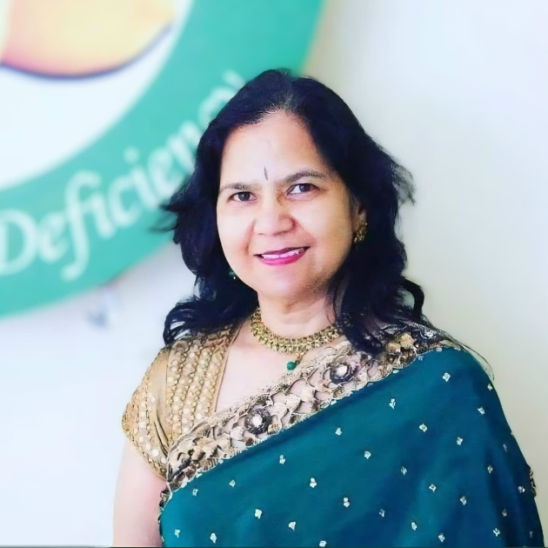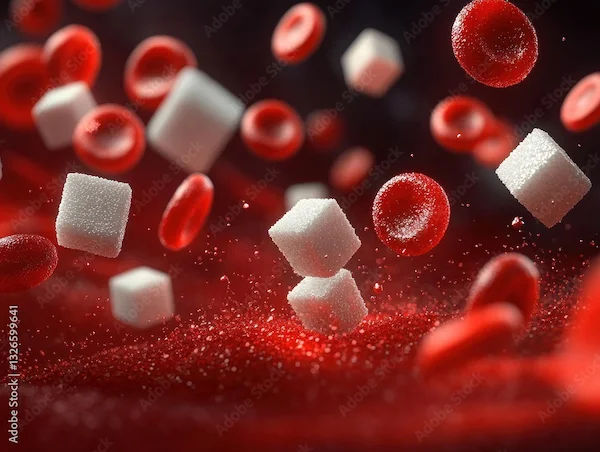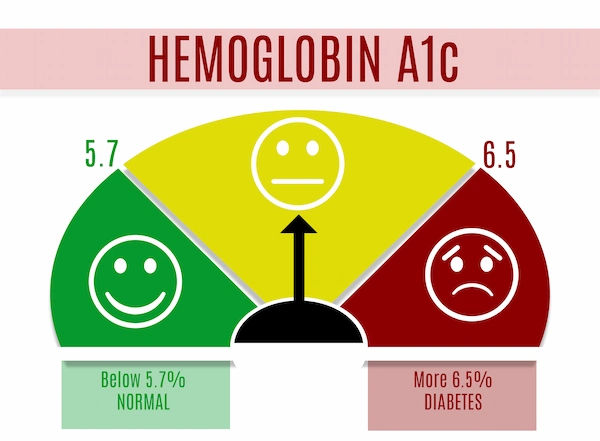Guide to Diabetes India Diet Sugar Impact And Warning Signs
Learn about diabetes management in India, including diet tips, sugar’s impact, early warning signs, and practical strategies to maintain healthy blood sugar levels.

Written by Dr. Mohammed Kamran
Reviewed by Dr. Rohinipriyanka Pondugula MBBS
Last updated on 23rd Sep, 2025

Introduction
Living with diabetes in India can feel like a constant battle against your plate. With a cuisine rich in carbohydrates and sugars, navigating what to eat often seems overwhelming. But what if you could turn your diet into your most powerful medicine? This comprehensive guide moves beyond simple "good food, bad food" lists. We will explore the science of how traditional Indian foods impact your blood sugar, provide a practical framework for building your meals, and highlight the early warning signs every Indian should know. Empower yourself with knowledge and take control of your health, one mindful bite at a time.
Understanding Diabetes: More Than Just Blood Sugar
Diabetes is a chronic metabolic disorder where the body either doesn't produce enough insulin (a hormone that
regulates blood sugar) or can't effectively use the insulin it produces. This leads to elevated levels of glucose in the blood, which, over time, can cause serious damage to the heart, blood vessels, eyes, kidneys, and nerves.
Type 1 vs. Type 2 Diabetes: Key Differences
While both involve high blood sugar, their causes and management differ.
- Type 1 Diabetes: An autoimmune condition where the body's immune system attacks and destroys the insulin-
producing cells in the pancreas. It is usually diagnosed in children and young adults and requires lifelong insulin
therapy. - Type 2 Diabetes: The most common form (over 90% of cases in India), where the body becomes resistant to insulin or the pancreas doesn't produce enough. It is heavily influenced by lifestyle factors like diet, physical inactivity, and obesity, and can often be managed with oral medication, diet, and exercise.
The Silent Alarm: Early Warning Signs of Diabetes in Indians
Many Indians live with prediabetes or undiagnosed diabetes for years. Recognising these early signs is crucial for
prevention and early management:
- Excessive thirst (Polydipsia) and hunger (Polyphagia): Constant need to drink water and frequent hunger pangs even after eating.
- Frequent urination (Polyuria): Waking up multiple times at night to urinate.
- Unexplained weight loss: Despite eating normally or more than usual.
- Fatigue and irritability: Feeling unusually tired and lethargic.
- Blurred vision: High blood sugar can cause fluid to pull from the lenses of your eyes.
- Slow-healing sores: Cuts and bruises take much longer to heal.
- Tingling hands/feet: Early signs of nerve damage (neuropathy).
If you experience a cluster of these diabetes warning signs, it is imperative to get tested. Apollo24|7 offers a convenient home collection for tests like HbA1c, which provides a three-month average of your blood sugar levels, giving a clear picture of your metabolic health.
Consult a Dietitian or Nutritionist for the best advice
The Sugar Rollercoaster: How Food Actually Impacts Your Blood Glucose
Every bite of food you take directly influences your blood sugar levels. Carbohydrates have the most significant impact, but not all carbs are created equal.
The Glycemic Index (GI) Demystified: Your Key to Smart Eating
The Glycemic Index is a scale from 0 to 100 that ranks carbohydrate-containing foods by how much they raise blood glucose levels compared to pure glucose (GI=100).
- Low GI (55 or less): These foods are digested and absorbed slowly, causing a gradual rise in blood sugar. Examples: Most legumes (chana, rajma), whole fruits, vegetables, nuts, and whole grains like barley and oats.
- Medium GI (56-69): These cause a moderate rise in blood sugar. Examples: Basmati rice, whole wheat chapati, couscous.
- High GI (70 or above): These are rapidly digested and cause a sharp spike in blood sugar. Examples: White bread, watermelon, corn flakes, boiled potatoes.
Pro Tip for Indians: Pair a high-GI food with a low-GI food to balance the meal. For example, have a small portion of
white rice (high GI) with a large serving of rajma (low GI) and salad.
Beyond Sugar: The Hidden Carb Trap in Indian Cuisine
While everyone knows to avoid sweets, the real challenge for Indians lies in staple foods. A large plate of white rice, multiple chapatis made with refined flour (maida), or fried snacks like samosas and kachoris are packed with simple carbohydrates that quickly convert to sugar. The key isn't elimination, but intelligent modification and portion control.
Building Your Plate: The Indian Thali Method for Diabetes
Forget complicated calorie counting. The best Indian diet for diabetes uses the familiar concept of a thali to ensure
balance.
- ½ of your plate: Non-starchy vegetables (e.g., spinach, bhindi, cabbage, cauliflower, salad).
- ¼ of your plate: Lean protein (e.g., chicken, fish, eggs, paneer, tofu, dal).
- ¼ of your plate: Whole grains or starchy vegetables (e.g., jowar roti, brown rice, quinoa, or a small sweet potato).
The Power of Portion Control: Your Fist, Palm, and Thumb Guide
- Carbohydrates (Grains/Roti): 1 clenched fist-sized portion per meal.
- Protein (Dal/Paneer): 1 palm-sized portion.
- Vegetables: 2 fist-sized portions.
- Fats (Oil/Ghee): 1 thumb-tip portion.
- Fruits: 1 fist-sized portion.
The Fibre Factor: Why Dal, Sabzi, and Salads Are Non-Negotiable
Fibre, especially soluble fibre found in oats, apples, and legumes, slows down carbohydrate digestion and sugar
absorption. It promotes gut health and increases satiety, preventing overeating. A high-fibre diabetes diet is a
cornerstone of effective sugar management.
The Definitive Indian Food List for Diabetes
Eat Liberally: Diabetes-Friendly Superfoods
- Vegetables: All green leafy vegetables, broccoli, cauliflower, bell peppers, tomatoes, bottle gourd (lauki), bitter gourd (karela).
- Proteins: Moong dal, chana dal, masoor dal, chickpeas (chana), unsweetened yoghurt, paneer (in moderation), fish.
- Grains: Jowar, bajra, ragi, oats, quinoa, brown rice (in controlled portions).
- Nuts & Seeds: Almonds, walnuts, flaxseeds, chia seeds (a handful per day).
Eat in Moderation: The Middle Ground
- Fruits: Berries, apple, pear, guava, orange. (Have whole fruit, not juice, and preferably as a mid-meal snack).
- Dairy: Milk (toned/skim), buttermilk (unsweetened).
- Grains: Whole wheat chapati, brown rice.
Limit or Avoid: Foods That Spike Sugar
- Sugar & Jaggery: White sugar, jaggery (gur), honey, sugary drinks, packaged juices.
- Refined Grains: Maida (in naan, bread, biscuits), white rice, suji (rava).
- Deep-Fried Foods: Samosa, pakoda, puri, bhujia.
- Sweets & Desserts: All Indian mithai, cakes, pastries, ice cream.
- Unhealthy Fats: Vanaspati ghee, excessive butter.
A Practical 1-Day Sample Indian Diet Plan for Diabetes
- Early Morning: 1 glass of warm water with methi seeds (soaked overnight) + 5-6 almonds.
- Breakfast: 1 bowl of vegetable poha (with peanuts and lemon) OR 2 moong dal chillas with mint chutney.
- Mid-Morning: 1 apple OR a glass of buttermilk (chaas).
- Lunch: 1 jowar/bajra roti + ½ bowl brown rice + 1 bowl dal + 1 large bowl vegetable sabzi (e.g., bhindi) + salad.
- Evening Snack: 1 cup green tea + a handful of roasted chana.
- Dinner: 1 bowl of vegetable khichdi (made with brown rice and moong dal) + 1 bowl of raita.
Lifestyle Synergy: Diet Isn't Everything
The Magic of Movement: Exercise as Insulin's Helper
Physical activity makes your cells more sensitive to insulin. Aim for at least 150 minutes of moderate-intensity exercise per week, like brisk walking, cycling, or swimming. A 15-minute walk after a meal can significantly blunt post-meal blood sugar spikes.
Stress, Sleep, and Sugar: The Unexpected Connection
Chronic stress and poor sleep (less than 7 hours) increase cortisol levels, which can raise blood sugar and promote insulin resistance. Practices like yoga, meditation, and prioritising sleep are non-negotiable parts of managing diabetes.
When to Seek Professional Help
While this guide provides a strong foundation, diabetes management is highly personal. If your condition does not
improve after trying these methods, book a physical visit to a doctor with Apollo24|7. They can help tailor a plan specific to your age, weight, diabetes type, and other health conditions, and adjust medications as needed.
Conclusion
Managing diabetes in India is not about deprivation; it's about rediscovering and reimagining your relationship with food. It's about choosing the right carbohydrates, prioritising fibre and protein, and mastering portion sizes. By understanding the impact of sugar on your body, recognising the warning signs, and adopting a balanced Indian diet paired with a healthy lifestyle, you can move from fear to empowerment. This journey is about making consistent, mindful choices that allow you to not just manage diabetes, but to thrive despite it. Start today—your health is worth every positive change.
Consult a Dietitian or Nutritionist for the best advice
Consult a Dietitian or Nutritionist for the best advice

Ms. Samapti Maity
Dietician
11 Years • Bsc (Clinical Nutrition & Dietitics), NDEP, Course in Maternal Infant Young Child Nutrition.
Kolkata
BIENETRE CLINIC, Kolkata
Dr Sumanth R
General Physician
2 Years • MBBS
Bengaluru
PRESTIGE SHANTHINIKETAN - SOCIETY CLINIC, Bengaluru

Neelanjana J
clinical nutrition
3 Years • Bsc., Msc. Nutrition and Dietetics.
Bengaluru
Apollo Clinic, JP nagar, Bengaluru
Dt. Ila Sharma
Clinical Nutritionist
18 Years • Master in food & Nutrition
Gurugram
VIPUL GREENS - SOCIETY CLINIC, Gurugram

Ms. Sushma Jaiswal
Dietician
42 Years • M.Sc.(Food & Nutrition)
Bengaluru
Swasthya Nutrition, Bengaluru
Consult a Dietitian or Nutritionist for the best advice

Ms. Samapti Maity
Dietician
11 Years • Bsc (Clinical Nutrition & Dietitics), NDEP, Course in Maternal Infant Young Child Nutrition.
Kolkata
BIENETRE CLINIC, Kolkata
Dr Sumanth R
General Physician
2 Years • MBBS
Bengaluru
PRESTIGE SHANTHINIKETAN - SOCIETY CLINIC, Bengaluru

Neelanjana J
clinical nutrition
3 Years • Bsc., Msc. Nutrition and Dietetics.
Bengaluru
Apollo Clinic, JP nagar, Bengaluru
Dt. Ila Sharma
Clinical Nutritionist
18 Years • Master in food & Nutrition
Gurugram
VIPUL GREENS - SOCIETY CLINIC, Gurugram

Ms. Sushma Jaiswal
Dietician
42 Years • M.Sc.(Food & Nutrition)
Bengaluru
Swasthya Nutrition, Bengaluru
More articles from Diabetes
Frequently Asked Questions
1. Can a diabetic patient eat mango or banana?
Yes, but in strict moderation and at the right time. Have a small slice of mango or a small banana as a mid-meal snack, not after a heavy meal. Monitor your blood sugar levels to see how your body responds. Prefer fruits like berries, apple, and guava which have a lower glycemic impact.
2. Is chapati good for diabetes?
Yes, but opt for chapatis made from whole grains like jowar, bajra, ragi, or whole wheat instead of refined flour (maida). Also, limit the number to 1-2 per meal based on your individual carbohydrate tolerance.
3. What are the best drinks for diabetics in India?
The best drinks are water, buttermilk (unsweetened chaas), unsweetened green tea, and jeera water. Avoid fruit juices, sweetened lassi, sodas, and sugary teas.
4. How can I satisfy my sugar cravings without spiking my glucose?
Opt for a piece of dark chocolate (70% cocoa or higher), a handful of nuts, a bowl of yoghurt with a few berries, or a date stuffed with a nut. These provide sweetness with fibre, fat, or protein to prevent a sharp spike.
5. Are there any specific yoga asanas for diabetes management?
Yes, certain asanas are believed to help stimulate the pancreas and improve insulin sensitivity. These include Paschimottanasana (Seated Forward Bend), Dhanurasana (Bow Pose), and Ardha Matsyendrasana (Half Spinal Twist). Always practice under guidance, especially if you have complications.


